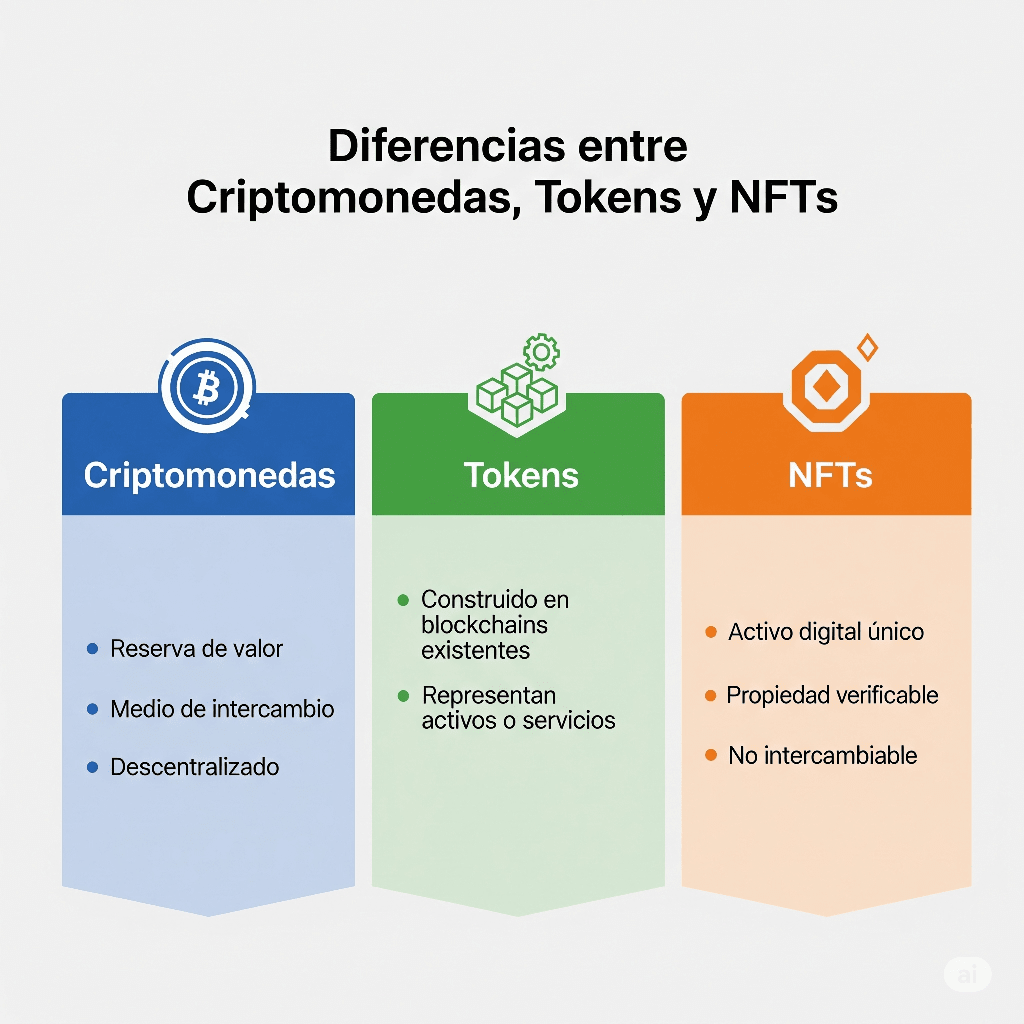
If you are new to the world of cryptocurrencies, here is an article where I explain what Tokens and NFTs are. What are they and how do they differ from Cryptos?
1. Cryptocurrencies: The foundation of the digital ecosystem
Cryptocurrencies are digital assets native to a blockchain. They do not depend on any external platform because they are a fundamental part of the network.
Main characteristics:
They function as a medium of exchange, store of value, or unit of account.
Examples: Bitcoin ($BTC ) on the Bitcoin network, Ether ($ETH ) on Ethereum, #BNB on Binance Smart Chain.
They are often decentralized, without control from banks or governments.
They have their own blockchain.
Advantages:
High security thanks to cryptography.
Allow global transactions without intermediaries.
In some cases, protection against inflation (like Bitcoin).
Disadvantages:
Price volatility.
Possible scalability limitations.
Risk of loss if private keys are not properly secured.
2. Tokens: Digital assets created on an existing blockchain
Unlike cryptocurrencies, tokens do not have their own blockchain; they are built on an already existing one (for example, ERC-20 tokens on Ethereum or BEP-20 on Binance Smart Chain).
Types of tokens:
Utility Tokens: provide access to services or products (e.g., BNB in its early days).
Security Tokens: represent financial assets or investment.
Stablecoins: tokens backed by stable assets like the dollar (USDT, USDC).
Governance Tokens: allow voting on decisions of a DAO.
How are they generated?
Through smart contracts on a blockchain.
Companies and projects can create tokens without having to develop a new network.
Advantages:
Easier and cheaper to create than a proprietary cryptocurrency.
Wide variety of uses (payments, governance, rewards, etc.).
Facilitate innovation in blockchain.
Disadvantages:
Dependence on the blockchain they are based on.
Some tokens lack real value or backing.
Risk of scams in unregulated projects.
3. NFTs (Non-Fungible Tokens): Unique digital assets
NFTs are a special type of token that represents unique digital ownership. While cryptocurrencies and tokens are fungible (each unit is equal to another), NFTs are unique.
Main uses:
Digital art and collectibles.
Music, video games, and metaverses.
Certification of ownership (tickets, documents, etc.).
How are they created?
Through a process called 'minting' on a blockchain compatible with NFTs, such as Ethereum (ERC-721) or Binance Smart Chain (BEP-721).
Advantages:
Guarantee authenticity and scarcity.
Allow creators to monetize their content directly.
Applications beyond art: digital identity, contracts, licenses.
Disadvantages:
Highly speculative market.
Dependence on platforms and standards.
Environmental impact (in blockchains with proof of work).
Main differences between cryptocurrencies, tokens, and NFTs:
CharacteristicCryptocurrenciesTokensNFTsOwn blockchainYesNoNoFungibilityFungibleFungibleNon-fungibleMain functionDigital moneyVarious usesUnique digital ownershipExamplesBTC, ETH, BNBUSDT, AAVEBored Ape, CryptoPunks

Conclusion
Cryptocurrencies: the base of the ecosystem and a medium of exchange.
Tokens: digital assets with multiple applications on an existing blockchain.
NFTs: represent unique digital ownership and open new possibilities in art, games, and more.
All these assets share the same foundation: blockchain, but their utility and value depend on the project, adoption, and market trust.
Crypto simplified for everyone.
If you liked this content, give me a 🚀 like and leave your comment. Don't forget ✍️ to follow me to learn, earn, and grow with Binance.
⚠️ Important notice ⚠
This content is for educational and informational purposes only.
💡 Does not represent financial advice.
Remember that investing in cryptocurrencies involves high risks and high volatility. 📊
Before making decisions, consult a financial professional. 🧾
Do your own research and protect your capital.🪙


